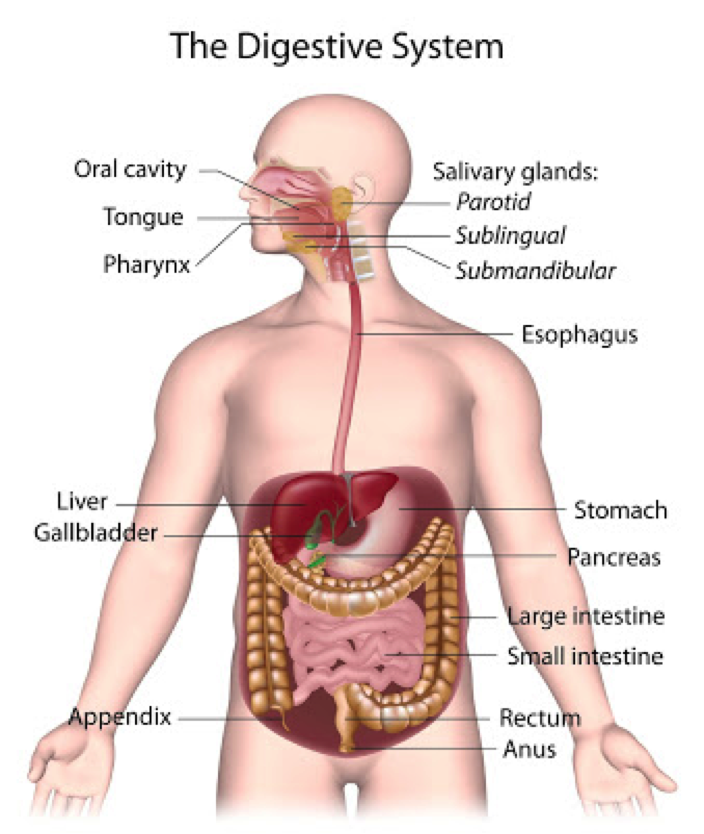
IBS is very common, but the symptoms are varied – constipation, diarrhoea, alternating bowel habit, bloating, abdominal distension, abdominal pain, excessive gas and borborygmi (intestinal noises). Some people experience all of these symptoms at some time or another, while others have more specific symptoms, for example where bloating is the major symptom.
When symptoms are experienced, people often consider what they most recently ate to determine the trigger food. Were there FODMAPs in that meal? What other foods could have contributed? Many times we hear patients state that within minutes of food hitting their stomach, they are on the toilet with urgency, diarrhoea and abdominal cramps. Is this possible?
Let’s consider the anatomy of the human gastrointestinal system:
Bowel transit studies indicate that in healthy individuals, the time taken for a substance to move from the mouth to the anus is somewhere between 12 and 48 hours.
The small intestine is particularly long – 6 metres in fact. The large intestine is ~1.5 metres long. So given the time it takes for food to move through the gut, symptoms experienced immediately after swallowing a suspect food cannot be attributed to the fermentation of FODMAPs ….
So how does this immediate symptom induction occur in some people?
The most likely explanation is the impact of hormones and nerve regulators that are triggered when we eat. For instance, when food enters the stomach, hormones such as cholecystokinin and secretin are released. These hormones stimulate the production of enzymes that aide digestion. In addition, when the stomach is stretched by the entry of food, nerves in the digestive system are stimulated. These nerves stimulate the movement of intestinal muscles which push food and digestive juices through the gut.
Because digestion takes many hours to days, the intestinal tract is always full of digestive contents from previous meals, and as a meal is consumed, these existing intestinal contents are moved through the intestines. So if the existing intestinal contents contain FODMAPs or other problem food components, symptoms may be experienced upon eating that have nothing to do with the current meal and everything to do with the previous meal/s. These delayed symptoms can be confusing and may have you pinpointing the wrong trigger food.
So what is the take home message? Consider previous meals you have eaten and whether they could have played a role, or whether there are other complicating factors such as stress that has had an impact on bowel function. If you are still confused and unable to work out what is causing your symptoms, keep a list of foods you have eaten over the 48 hours prior to experiencing symptoms and show this to your dietitian to utilise his/her food detective expertise!